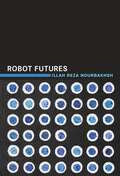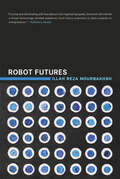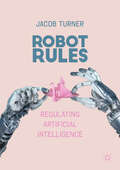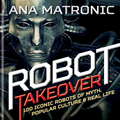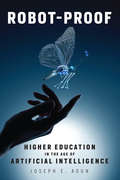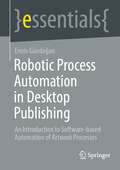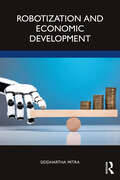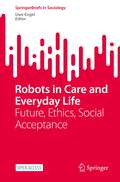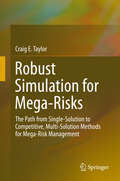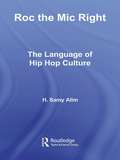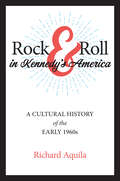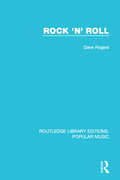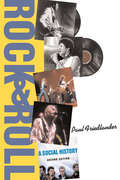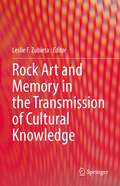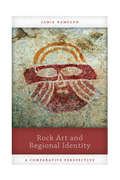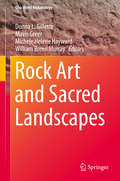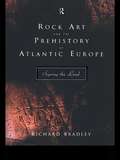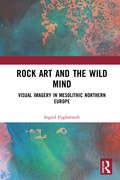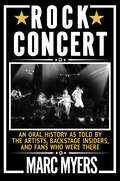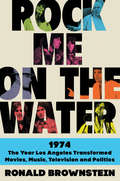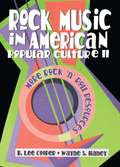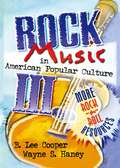- Table View
- List View
Robot Futures
by Illah Reza NourbakhshWith robots, we are inventing a new species that is part material and part digital. The ambition of modern robotics goes beyond copying humans, beyond the effort to make walking,talking androids that are indistinguishable from people. Future robots will have superhumanabilities in both the physical and digital realms. They will be embedded in our physical spaces,with the ability to go where we cannot, and will have minds of their own, thanks to artificialintelligence. They will be fully connected to the digital world, far better at carrying out onlinetasks than we are. In Robot Futures, the roboticist Illah Reza Nourbakhshconsiders how we will share our world with these creatures, and how our society could change as itincorporates a race of stronger, smarter beings. Nourbakhsh imagines a future that includes adbotsoffering interactive custom messaging; robotic flying toys that operate by means of "gazetracking"; robot-enabled multimodal, multicontinental telepresence; and even a way thatnanorobots could allow us to assume different physical forms. Nourbakhsh follows each glimpse intothe robotic future with an examination of the underlying technology and an exploration of the socialconsequences of the scenario. Each chapter describes a form of technologicalempowerment -- in some cases, empowerment run amok, with corporations and institutions amassing evenmore power and influence and individuals becoming unconstrained by social accountability. (Imaginethe hotheaded discourse of the Internet taking physical form. ) Nourbakhsh also offers acounter-vision: a robotics designed to create civic and community empowerment. His book helps usunderstand why that is the robot future we should try to bring about.
Robot Futures
by Illah Reza NourbakhshA roboticist imagines life with robots that sell us products, drive our cars, even allow us to assume new physical form, and more.With robots, we are inventing a new species that is part material and part digital. The ambition of modern robotics goes beyond copying humans, beyond the effort to make walking, talking androids that are indistinguishable from people. Future robots will have superhuman abilities in both the physical and digital realms. They will be embedded in our physical spaces, with the ability to go where we cannot, and will have minds of their own, thanks to artificial intelligence. In Robot Futures, the roboticist Illah Reza Nourbakhsh considers how we will share our world with these creatures, and how our society could change as it incorporates a race of stronger, smarter beings.Nourbakhsh imagines a future that includes adbots offering interactive custom messaging; robotic flying toys that operate by means of “gaze tracking”; robot-enabled multimodal, multicontinental telepresence; and even a way that nanorobots could allow us to assume different physical forms. Nourbakhsh examines the underlying technology and the social consequences of each scenario. He also offers a counter-vision: a robotics designed to create civic and community empowerment. His book helps us understand why that is the robot future we should try to bring about.
Robot Ghosts and Wired Dreams: Japanese Science Fiction from Origins to Anime
by Takayuki Tatsumi Christopher Bolton Istvan Csicsery-Ronay JR.Since the end of the Second World War—and particularly over the last decade—Japanese science fiction has strongly influenced global popular culture. Unlike American and British science fiction, its most popular examples have been visual—from Gojira (Godzilla) and Astro Boy in the 1950s and 1960s to the anime masterpieces Akira and Ghost in the Shell of the 1980s and 1990s—while little attention has been paid to a vibrant tradition of prose science fiction in Japan. Robot Ghosts and Wired Dreams remedies this neglect with a rich exploration of the genre that connects prose science fiction to contemporary anime. Bringing together Western scholars and leading Japanese critics, this groundbreaking work traces the beginnings, evolution, and future direction of science fiction in Japan, its major schools and authors, cultural origins and relationship to its Western counterparts, the role of the genre in the formation of Japan&’s national and political identity, and its unique fan culture. Covering a remarkable range of texts—from the 1930s fantastic detective fiction of Yumeno Kyûsaku to the cross-culturally produced and marketed film and video game franchise Final Fantasy—this book firmly establishes Japanese science fiction as a vital and exciting genre. Contributors: Hiroki Azuma; Hiroko Chiba, DePauw U; Naoki Chiba; William O. Gardner, Swarthmore College; Mari Kotani; Livia Monnet, U of Montreal; Miri Nakamura, Stanford U; Susan Napier, Tufts U; Sharalyn Orbaugh, U of British Columbia; Tamaki Saitô; Thomas Schnellbächer, Berlin Free U. Christopher Bolton is assistant professor of Japanese at Williams College. Istvan Csicsery-Ronay Jr. is professor of English at DePauw University. Takayuki Tatsumi is professor of English at Keio University.
Robot Rules: Regulating Artificial Intelligence In The 21st Century
by Jacob TurnerThis book explains why AI is unique, what legal and ethical problems it could cause, and how we can address them. It argues that AI is unlike is any other previous technology, owing to its ability to take decisions independently and unpredictably. This gives rise to three issues: responsibility—who is liable if AI causes harm; rights—the disputed moral and pragmatic grounds for granting AI legal personality; and the ethics surrounding the decision-making of AI. The book suggests that in order to address these questions we need to develop new institutions and regulations on a cross-industry and international level. Incorporating clear explanations of complex topics, Robot Rules will appeal to a multi-disciplinary audience, from those with an interest in law, politics and philosophy, to computer programming, engineering and neuroscience.
Robot Takeover: 100 Iconic Robots of Myth, Popular Culture & Real Life
by Ana MatronicIn the not too distant future, mankind faces the possibility of being overthrown by its own creations.In Robot Takeover, Ana Matronic presents 100 of the most legendary robots and what makes them iconic - their creators, purpose, design and why their existence has shaken, or in some cases, comforted us. Through 100 iconic robots - from Maria in Fritz Lang's Metropolis to the Sentinels of The Matrix and beyond, via the Gunslinger (Westworld), R2-D2 (Star Wars) etc. - this is a comprehensive look at the robot phenomenon. As well as these 100 entries on specific robots, there are features on the people who invent robots, the moral issues around robot sentience, and the prevalence of robots in music, art and fashion, and more. It's the only robot book you need.With fighters, seducers and psychos in their ranks, it's best you get ready for the robot revolution. Know your enemy...
Robot-Proof: Higher Education in the Age of Artificial Intelligence (The\mit Press Ser.)
by Joseph E. AounHow to educate the next generation of college students to invent, to create, and to discover—filling needs that even the most sophisticated robot cannot.Driverless cars are hitting the road, powered by artificial intelligence. Robots can climb stairs, open doors, win Jeopardy, analyze stocks, work in factories, find parking spaces, advise oncologists. In the past, automation was considered a threat to low-skilled labor. Now, many high-skilled functions, including interpreting medical images, doing legal research, and analyzing data, are within the skill sets of machines. How can higher education prepare students for their professional lives when professions themselves are disappearing? In Robot-Proof, Northeastern University president Joseph Aoun proposes a way to educate the next generation of college students to invent, to create, and to discover—to fill needs in society that even the most sophisticated artificial intelligence agent cannot.A “robot-proof” education, Aoun argues, is not concerned solely with topping up students' minds with high-octane facts. Rather, it calibrates them with a creative mindset and the mental elasticity to invent, discover, or create something valuable to society—a scientific proof, a hip-hop recording, a web comic, a cure for cancer. Aoun lays out the framework for a new discipline, humanics, which builds on our innate strengths and prepares students to compete in a labor market in which smart machines work alongside human professionals. The new literacies of Aoun's humanics are data literacy, technological literacy, and human literacy. Students will need data literacy to manage the flow of big data, and technological literacy to know how their machines work, but human literacy—the humanities, communication, and design—to function as a human being. Life-long learning opportunities will support their ability to adapt to change.The only certainty about the future is change. Higher education based on the new literacies of humanics can equip students for living and working through change.
Robotic Process Automation im Desktop-Publishing: Eine Einführung in softwaregestützte Automatisierung von Artwork-Prozessen (essentials)
by Ennis GündoğanDie Automatisierung dient als eine wesentliche Komponente in der Wirtschaft, um Unternehmensziele mit qualitativ und quantitativ besseren Ergebnissen zu erreichen. Auch im Bereich des Desktop-Publishings (DTP) ist der Einsatz von Automatismen unabdingbar, um die Kosteneinsparung im Unternehmen und die Verbesserung der Endergebnisse durch Standardisierungen und Fehlerreduzierungen sowie die Entlastung der Mitarbeiter bezüglich aufwendiger und monotoner Aufgaben zu erreichen. Das vorliegende essential setzt das Ziel, die vielfältigen Möglichkeiten der Automatisierung im Bereich des DTP zusammenzufassen und legt dabei den Fokus auf sich wiederholende Artwork-Prozesse in der Druckvorstufe.
Robotic Process Automation in Desktop Publishing: An Introduction to Software-based Automation of Artwork Processes (essentials)
by Ennis GündoğanAutomation serves as an essential component in business to achieve company goals with qualitatively and quantitatively better results. The use of automation is also in the field of desktop publishing (DTP) indispensable to achieve cost savings in the company and to improve the final results through standardization and error reduction, as well as to relieve employees with regard to laborious and monotonous tasks. This essential aims to summarize the many possibilities of automation in the field of DTP, focusing on repetitive artwork processes in prepress.
Robotization and Economic Development
by Siddhartha MitraThis book critically examines the sweeping impacts of robotization and the use of artificial intelligence on employment, per capita income, quality of life, poverty, and inequality in developing and developed economies. It analyzes the direct and indirect effects they have had and are projected to have on the labour markets and production processes in the manufacturing, healthcare and agricultural industries among others. The author explores comparisons of human labour with robotic labour emphasizing the changes that new technologies will bring to traditionally labour-intensive industries. Offering various insights into the effectiveness, benefits and negative implications of robotization on the economy, the book provides a comprehensive picture for policymakers to implement changes that embrace new technologies while meeting employment needs and development goals. Topical and lucid, this book will be an essential read for scholars and researchers of science and technology studies, digital humanities, economics, labour studies, public policy, development studies, political studies and sociology as well as policymakers and others who are interested in these areas.
Robots in Care and Everyday Life: Future, Ethics, Social Acceptance (SpringerBriefs in Sociology)
by Uwe EngelThis open access book presents detailed findings about the ethical, legal, and social acceptance of robots in the German and European context. The key resource is the Bremen AI Delphi survey of scientists and politicians and a related population survey. The focus is on trust in robotic assistance, human willingness to use this assistance, and the expected personal well-being in human-robot interaction. Using recent data from Eurostat, the European Social Survey, and the Eurobarometer survey, the analysis is extended to Germany and the EU. The acceptance of robots in care and everyday life is viewed against their acceptance in other contexts of life and the scientific research. The book reports on how the probability of five complex future scenarios is evaluated by experts and politicians. These scenarios cover a broad range of topics, including the worst-case scenario of cutthroat competition for jobs, the wealth promise of AI, communication in human-robot interaction, robotic assistance, and ethical and legal conflicts. International economic competition alone will ensure that countries invest sustainably in the future technologies of AI and robots. But will these technologies also be accepted by the population? The book raises the core issue of how governments can gain the needed social, ethical, and user acceptance of AI and robots in everyday life. This highly topical book is of interest to researchers, professionals and policy makers working on various aspects of human-robot interaction. This is an open access book.
Robust Simulation for Mega-Risks
by Craig E. TaylorThis book introduces a new way of analyzing, measuring and thinking about mega-risks, a "paradigm shift" that moves from single-solutions to multiple competitive solutions and strategies. "Robust simulation" is a statistical approach that demonstrates future risk through simulation of a suite of possible answers. To arrive at this point, the book systematically walks through the historical statistical methods for evaluating risks. The first chapters deal with three theories of probability and statistics that have been dominant in the 20th century, along with key mathematical issues and dilemmas. The book then introduces "robust simulation" which solves the problem of measuring the stability of simulated losses, incorporates outliers, and simulates future risk through a suite of possible answers and stochastic modeling of unknown variables. This book discusses various analytical methods for utilizing divergent solutions in making pragmatic financial and risk-mitigation decisions. The book emphasizes the importance of flexibility and attempts to demonstrate that alternative credible approaches are helpful and required in understanding a great many phenomena.
Roc the Mic Right: The Language of Hip Hop Culture
by H. Samy AlimComplementing a burgeoning area of interest and academic study, Roc the Mic Right explores the central role of language within the Hip Hop Nation (HHN). With its status convincingly argued as the best means by which to read Hip Hop culture, H. Samy Alim then focuses on discursive practices, such as narrative sequencing and ciphers, or lyrical circles of rhymers. Often a marginalized phenomenon, the complexity and creativity of Hip Hop lyrical production is emphasised, whilst Alim works towards the creation of a schema by which to understand its aesthetic. Using his own ethnographic research, Alim shows how Hip Hop language could be used in an educational context and presents a new approach to the study of the language and culture of the Hip Hop Nation: 'Hiphopography'. The final section of the book, which includes real conversational narratives from Hip Hop artists such as The Wu-Tang Clan and Chuck D, focuses on direct engagement with the language. A highly accessible and lively work on the most studied and read about language variety in the United States, this book will appeal not only to language and linguistics researchers and students, but holds a genuine appeal to anyone interested in Hip Hop or Black African Language.
Rock & Roll in Kennedy's America: A Cultural History of the Early 1960s
by Richard AquilaA rousing, poignant look at the cultural history of rock & roll during the early 1960s.In the early 1960s, the nation was on track to fulfill its destiny in what was being called "the American Century." Baby boomers and rock & roll shared the country's optimism and energy. For "one brief, shining moment" in the early 1960s, both President John F. Kennedy and young people across the country were riding high. The dream of a New Frontier would soon give way, however, to a new reality involving assassinations, the Vietnam War, Cold War crises, the civil rights movement, a new feminist movement, and various culture wars.From the former host of NPR's Rock & Roll America, Richard Aquila's Rock & Roll in Kennedy's America offers an in-depth look at early 1960s rock & roll, as well as an unconventional history of Kennedy's America through the lens of popular music. Based on extensive research and exclusive interviews with Dion, Bo Diddley, Brenda Lee, Martha Reeves, Pete Seeger, Bob Gaudio, Dick Clark, and other legendary figures, the book rejects the myth that Buddy Holly's death in 1959 was "the day the music died." It proves that rock & roll during the early 1960s was vibrant and in tune with the history and events of this colorful era. These interviews and Aquila's research reveal unique insights and new details about politics, gender, race, ethnicity, youth culture, and everyday life. Rock & Roll in Kennedy's America recalls an important chapter in rock & roll and American history.
Rock 'n' Roll (Routledge Library Editions: Popular Music #8)
by Dave RogersWhen rock ‘n’ roll began its ascendancy in the 1950s the older generation saw it as dangerous, renegade, threatening the moral stability of a nation. Young people saw it as freedom, and most importantly, as their music. The teenage revolution was here, This book, first published in 1982, traces the roots of this cultural transformation, its emergence in rock ‘n’ roll and other media, and shows just how violent the confrontation was by looking at contemporary newspaper reports.
Rock And Roll: A Social History
by Paul FriedlanderNow updated with two new chapters and an extraordinary collection of photographs, this second edition of Paul Friedlander's Rock and Roll: A Social History is a smash hit. The social force of rock and roll music leaps off the page as Paul Friedlander provides impressive insights based on hits from Johnny B. Goode to Smells Like Teen Spirit and beyond. In this musical journey, Friedlander offers the melodious strains and hard-edged riffs of Elvis, the Beatles, The Who, Dylan, Clapton, Hendrix, Motown, the San Francisco Beat, Punk, New Wave, rap, metal, 90s grunge, plus file sharing, and much more. The book is written in a refreshing, captivating style that pulls the reader in, offering no less than a complete social and cultural history of rock and roll for students and general audiences alike. Friedlander writes, 'This book chronicles the first forty years of rock/pop music history. Picture the various musical styles as locations on a giant unfolding road map. As you open the map, you travel from place to place, stopping at each chapter to sample the artistry. Don't forget to dress your imagination appropriately for this trip, because each genre is affected by the societal topography and climate that surround it. Enjoy your trip. We promise it will be a good one!'
Rock Art and Memory in the Transmission of Cultural Knowledge
by Leslie F. ZubietaThis book shares timely and thought-provoking methodological and theoretical approaches from perspectives concerning landscape, gender, cognition, neural networks, material culture and ontology in order to comprehend rock art’s role in memorisation processes, collective memory, and the intergenerational circulation of knowledge. The case studies offered here stem from human experiences from around the globe—Africa, Australia, Europe, North and South America—, which reflects the authors’ diverse interpretative stances. While some of the approaches deal with mnemonics, new digital technologies and statistical analysis, others examine performances, sensory engagement, language, and political disputes, giving the reader a comprehensive view of the myriad connections between memory studies and rock art. Indigenous interlocutors participate as collaborators and authors, creating space for Indigenous narratives of memory. These narratives merge with Western versions of past and recent memories in order to construct jointly novel inter-epistemic understandings of images made on rock. Each chapter demonstrates the commitment of rock art studies to strengthen and enrich the field by exploring how communities and cultures across time have perceived and entangled rock images with a broad range of material culture, nonhumans, people, emotions, performances, sounds and narratives. Such relations are pivotal to understanding the universe behind the intersections of memory and rock art and to generating future interdisciplinary collaborative studies.
Rock Art and Regional Identity: A Comparative Perspective
by Jamie HampsonWhy did the ancient artists create paintings and engravings? What did the images mean? This careful study of rock art motifs in the Trans-Pecos area of Texas and a small area in South Africa demonstrates that there are archaeological and anthropological ways of accessing the past in order to investigate and explain the significance of rock art motifs. Using two disparate regions shows the possibility of comparative rock art studies and highlights the importance of regional studies and regional variations. This is an ideal resource for students and researchers.
Rock Art and Sacred Landscapes
by Donna L. Gillette Mavis Greer Michele Helene Hayward William Breen MurraySocial and behavioral scientists study religion or spirituality in various ways and have defined and approached the subject from different perspectives. In cultural anthropology and archaeology the understanding of what constitutes religion involves beliefs, oral traditions, practices and rituals, as well as the related material culture including artifacts, landscapes, structural features and visual representations like rock art. Researchers work to understand religious thoughts and actions that prompted their creation distinct from those created for economic, political, or social purposes. Rock art landscapes convey knowledge about sacred and spiritual ecology from generation to generation. Contributors to this global view detail how rock art can be employed to address issues regarding past dynamic interplays of religions and spiritual elements. Studies from a number of different cultural areas and time periods explore how rock art engages the emotions, materializes thoughts and actions and reflects religious organization as it intersects with sociopolitical cultural systems.
Rock Art and the Prehistory of Atlantic Europe: Signing the Land
by Richard Bradley Mr Richard BradleyAlong the Atlantic seaboard, from Scotland to Spain, are numerous rock carvings made four to five thousand years ago, whose interpretation poses a major challenge to the archaeologist. In the first full-length treatment of the subject, based largely on new fieldwork, Richard Bradley argues that these carvings should be interpreted as a series of symbolic messages that are shared between monuments, artefacts and natural places in the landscape. He discusses the cultural setting of the rock carvings and the ways in which they can be interpreted in relation to ancient land use, the creation of ritual monuments and the burial of the dead. Integrating this fascinating yet little-known material into the mainstream of prehistoric studies, Richard Bradley demonstrates that these carvings played a fundamental role in the organization of the prehistoric landscape.
Rock Art and the Wild Mind: Visual Imagery in Mesolithic Northern Europe
by Ingrid FuglestvedtRock Art and the Wild Mind presents a study of Mesolithic rock art on the Scandinavian peninsula, including the large rock art sites in Alta, Nämforsen and Vingen. Hunters’ rock art of this area, despite local styles, bears a strong commonality in what it depicts, most often terrestrial big game in diverse confrontations with the human realm. The various types of compositions are defined as visual thematizations of the enigmatic relationship between humans and big game animals. These thematizations, here defined as motemes, are explained as being products of the Mesolithic mind ‘in action’, observed through repetitions, variations and transformations of a number of defined motemes. Through a transformational logic, the transition from ‘animic’ to ‘totemic’ rock art is observed. Totemic rock art reaches a peak during the final stages of the Late Mesolithic, and it is suggested that this can be interpreted as representing an increasing focus on human society towards the end of this era. The move from animism to totemism is explained as being part of the overall social development on the Scandinavian peninsula. This book will be of interest to students of rock art generally and scholars working on the historical developments of prehistoric hunter-gatherers in northern Europe. It will also appeal to students and academics in the fields of art history and aesthetics and to those interested in the work of Lévi-Strauss.
Rock Concert: An Oral History as Told by the Artists, Backstage Insiders, and Fans Who Were There
by Marc MyersA “fascinating, intimate” oral history of the golden age of the rock concert based on nearly 100 interviews with musicians, fans, and others (Publishers Weekly).Decades after the rise of rock music in the 1950s, the rock concert retains its power as a unifying experience—and as a multi-billion-dollar industry. In Rock Concert, acclaimed music writer Marc Myers delves into the history of this cultural phenomenon, weaving together ground-breaking accounts from the people who were there.Myers combines the tales of icons like Joan Baez, Ian Anderson, Alice Cooper, Steve Miller, Roger Waters, and Angus Young with the disc jockeys, audio engineers, and music journalists, and promoters who organized it all, like Michael Lang, co-founder of Woodstock, to create a rounded and vivid account of live rock’s stratospheric rise.Rock Concert offers a backstage view of rock ‘n’ roll as it evolved through live performance—from the rise of R&B in the 1950s, to the hippie gatherings of the ‘60s, and the growing arena tours of the ‘70s and ‘80s. Elvis Presley’s gyrating hips, the “British Invasion” of the Beatles, the Grateful Dead’s free flowing jams, and Pink Floyd’s The Wall are just a few of the defining musical acts that drive this rich narrative.
Rock Me on the Water: 1974-The Year Los Angeles Transformed Movies, Music, Television, and Politics
by Ronald BrownsteinIn this exceptional cultural history, Atlantic Senior Editor Ronald Brownstein—“one of America's best political journalists (The Economist)—tells the kaleidoscopic story of one monumental year that marked the city of Los Angeles’ creative peak, a glittering moment when popular culture was ahead of politics in predicting what America would become. <P><P>Los Angeles in 1974 exerted more influence over popular culture than any other city in America. Los Angeles that year, in fact, dominated popular culture more than it ever had before, or would again. Working in film, recording, and television studios around Sunset Boulevard, living in Brentwood and Beverly Hills or amid the flickering lights of the Hollywood Hills, a cluster of transformative talents produced an explosion in popular culture which reflected the demographic, social, and cultural realities of a changing America. At a time when Richard Nixon won two presidential elections with a message of backlash against the social changes unleashed by the sixties, popular culture was ahead of politics in predicting what America would become. The early 1970s in Los Angeles was the time and the place where conservatives definitively lost the battle to control popular culture. <P><P>Rock Me on the Water traces the confluence of movies, music, television, and politics in Los Angeles month by month through that transformative, magical year. Ronald Brownstein reveals how 1974 represented a confrontation between a massive younger generation intent on change, and a political order rooted in the status quo. Today, we are again witnessing a generational cultural divide. Brownstein shows how the voices resistant to change may win the political battle for a time, but they cannot hold back the future. <P><P><b>A New York Times Bestseller</b>
Rock Music in American Popular Culture II: More Rock 'n' Roll Resources
by Frank Hoffmann B Lee Cooper Wayne S Haney Beulah B RamirezFrom “Who Put the Bomp (in the Bomp, Bomp, Bomp)?” to a list of all song titles containing the word “werewolf,” Rock Music in American Popular Culture II: More Rock ’n’Roll Resources continues where 1995’s Volume I left off. Using references and illustrations drawn from contemporary lyrics and supported by historical and sociological research on popular cultural subjects, this collection of insightful essays and reviews assesses the involvement of musical imagery in personal issues, in social and political matters, and in key socialization activities. From marriage and sex to public schools and youth culture, readers discover how popular culture can be used to explore American values. As Authors B. Lee Cooper and Wayne S. Haney prove that integrated popular culture is the product of commercial interaction with public interest and values rather than a random phenomena, they entertainingly and knowledgeably cover such topics as: answer songs--interchanges involving social events and lyrical commentaries as explored in response recordings horror films--translations and transformations of literary images and motion picture figures into popular song characters and tales public schools--images of formal educational practices and informal learning processes in popular song lyrics sex--suggestive tales and censorship challenges within the popular music realm war--examinations of persistent military and home front themes featured in wartime recordingsRock Music in American Popular Culture II: More Rock ‘n’Roll Resources is nontechnical, written in a clear and concise fashion, and explores each topic thoroughly, with ample discographic and bibliographic resources provided for additional research. Arranged alphabetically for quick and easy reference to specific topics, the book is equally enjoyable to read straight through. Rock music fans, teachers, popular culture professors, music instructors, public librarians, sound recording archivists, sociologists, social critics, and journalists can all learn something, as the book shows them the cross-pollination of music and social life in the United States.
Rock Music in American Popular Culture III: More Rock 'n' Roll Resources
by Frank Hoffmann B Lee Cooper Wayne S HaneyRock Music in American Popular Culture III: More Rock ’n’Roll Resources explores the fascinating world of rock music and examines how this medium functions as an expression of cultural and social identity. This nostalgic guide explores the meanings and messages behind some of the most popular rock ’n’roll songs that captured the American spirit, mirrored society, and reflected events in our history. Arranged by themes, Rock Music in American Popular Culture III examines a variety of social and cultural topics with related songs, such as: sex and censorship--“Only the Good Die Young” by Billy Joel and “Night Moves” by Bob Seger and The Silver Bullet Band holiday songs--“Rockin’Around the Christmas Tree” by Brenda Lee and “The Christmas Song” by Nat King Cole death--“Leader of the Pack” by The Shangri-Las and “The Unknown Soldier” by The Doors foolish behavior--“When a Man Loves a Woman” by Percy Sledge and “What Kind of Fool” by Barbra Streisand and Barry Gibb jobs and the workplace--“Don’t Stand So Close to Me” by The Police and “Dirty Laundry” by Don Henley military involvements--“Boogie Woogie Bugle Boy” by the Andrews Sisters and “War” by Edwin Starr novelty recordings--“The Purple People Eater” by Sheb Wooley and “Eat It” by Weird Al Yankovic letters and postal images--“P. S. I Love You” by The Beatles and “Return to Sender” by Elvis PreselyIn addition, a discography and a bibliography after each section give further examples of the themes and resources being discussed, as do extensive lists of print references at the end of the text.
Rock Music in American Popular Culture: Rock 'n' Roll Resources
by Frank Hoffmann B Lee Cooper Wayne S HaneyHow does rock music impact culture? According to authors B. Lee Cooper and Wayne S. Haney, it is central to the definition of society and has had a great impact on shaping American culture. In Rock Music in American Popular Culture, insightful essays and book reviews explore ways popular culture items can be used to explore American values. This fascinating book is arranged alphabetically for quick and easy reference to specific topics, but the book is equally enjoyable to read straight through.The influence of rock era music is evident throughout the text, demonstrating how various topics in the popular culture field are interconnected. Students in popular culture survey courses and American studies classes will be fascinated by these unique explorations of how family businesses, games, nursery rhymes, rock and roll legends, and other musical ventures shed light on our society and how they have shaped American values over the years.
